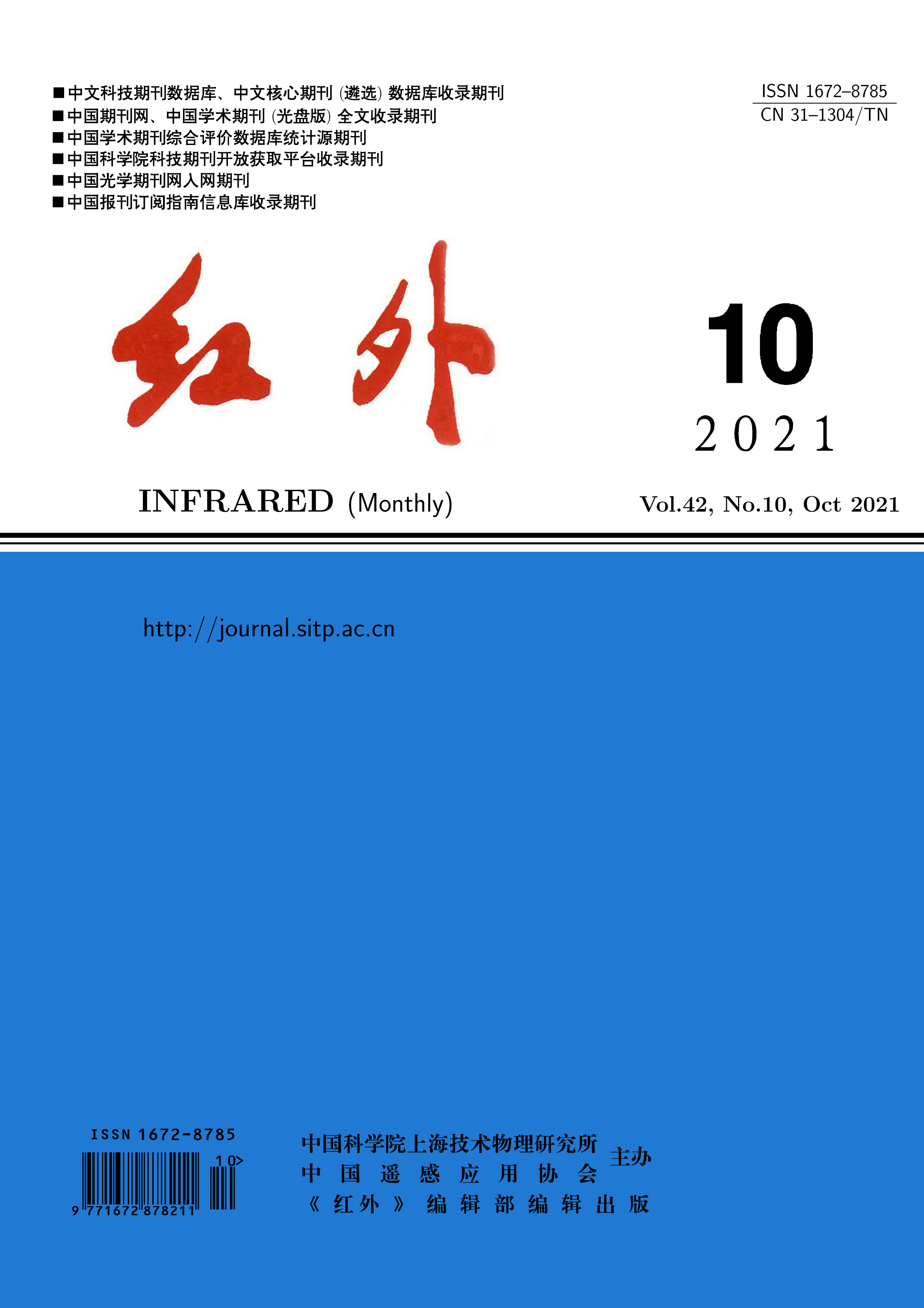
By combining the existing main types of mercury cadmium telluride (HgCdTe) avalanche photodiode (APD) devices, the current mainstream APD device development route in the world is briefly summarized, and the structures and performance characteristics of major APD devices, including PIN, high-density vertically integrated photodiode (HDVIP) and separated absorption and multiplication (SAM) devices, are analyzed. By comparing the device optimization ideas and performance characteristics of different technical routes, the sustainable development of related devices is prospected. At present, the SAM devices are the structures with the best dark current suppression and high-temperature operation performance among mainstream APD devices, which can achieve high-sensitivity detection under high-gain conditions. This also opened up a new direction for the development of related device processes.
The existence of blind pixels and non-uniform noise will lead to a significant decrease in the imaging quality of infrared images. Aiming at this problem, a non-uniformity correction algorithm for infrared images is designed. First, the principle of the two-point correction algorithm is introduced. Then the definition of blind pixels and the traditional commonly used blind pixel detection method and blind pixel compensation method are analyzed. On this basis, a gradient threshold blind pixel detection method is proposed, that is, the judgment threshold of the blind pixel is obtained by calculating the grayscale difference between all adjacent pixels. Subsequently, the improved neighborhood substitution method is used for blind pixel compensation, and the above algorithm is used in a self-developed mid-wave infrared camera. Finally, an imaging experiment of a blackbody is designed, and the blind pixel detection and compensation algorithms proposed in this paper are compared with the commonly used methods at this stage, and the imaging quality and non-uniformity indicators of the images before and after correction are compared. The results show that the non-uniformity correction algorithm proposed in this paper can effectively suppress blind pixels and noise, the non-uniformity of the corrected image is reduced by 65%, and the image quality is significantly improved, which can meet the working requirements of the self-developed mid-wave infrared camera.
The problems of splintering and crosstalk limit the development of indium antimonide (InSb) focal plane detectors to larger array sizes and smaller pixel pitches. The experimental results of an InSb focal plane detector using discrete photosensitive pixels are reported. An InSb infrared detector with an array size of 320×256 and a pixel pitch of 30 m is prepared, and the average signal response value is measured to be 441.112 mV and the average noise value is measured to be 1.729 mV. This array is discrete, which alleviates the problems of splintering and crosstalk, and has high reliability and high filling rate. Compared with the method of bonding silicon wafers and then etching to form discrete pixels, this method does not have the absorption loss of incident light information by silicon wafers, and the manufacturing process is simple.
High- and low-temperature cyclic annealing is one of the effective strategies to reduce the dislocation density of mercury cadmium telluride (HgCdTe) materials and is widely used to improve the quality of HgCdTe. The silicon-based HgCdTe material is heat treated using an off-site high- and low-temperature cyclic annealing process, and the effect of annealing conditions on the HgCdTe material is studied by designing an orthogonal experiment. The best annealing effect is obtained under the conditions of a temperature range of 250 ℃ to 450 ℃, a heating time of 5 min, and 12 cycles. The statistical dislocation density method is used to compare the dislocation changes of HgCdTe materials before and after annealing. Compared with the unannealed HgCdTe, the dislocation density of the annealed HgCdTe is reduced by about 80% to 1×106-2×106 cm-2. The X-ray rocking curve test results show that the half-peak width of the silicon-based HgCdTe can be reduced to 75-80 arcsec after annealing. This study comprehensively improves the quality of silicon-based HgCdTe and provides a high-quality material foundation for the research and development of focal plane devices.
A metamaterial microstructure consisting of a single-pole resonator and two rectangular open-ring resonators is designed. The broadband electromagnetically induced transparency (EIT) effect and slow-light effect of the flexible metamaterial structure are studied, and a transparent window with a maximum transmittance of 86.96%, a relative bandwidth of 64.14%, and a slow-light group delay of 3.20 ps are obtained. When the Fermi level of graphene increases from 0 eV to 1 eV, the light transmittance decreases from 86.96% to 28.9%, and the modulation depth is 66.7%. In addition, when the surface of the microstructure is covered with an analyte with a refractive index of 1.0-1.8 and a thickness of 5 m, the refractive index sensing sensitivity of the microstructure is 77.93 GHz/RIU. This study may provide a new direction for the active regulation of broadband EIT-like effects and high-sensitivity refractive index sensing devices in the terahertz (THz) band.
Water is a basic resource for the development and production of human society. With the continuous development of remote sensing technology and cloud computing technology, the Google Earth Engine (GEE) platform has become an important means for large-scale and long-term surface water bodies analysis and mapping. Using Landsat 5 TM and Landsat 8 OLI satellite data, the spatial-temporal variation characteristics of surface water bodies in Mongolia from June to September 1985—2023 are analyzed. The results show that the area of surface water bodies in Mongolia showed a downward trend from 1985 to 2023, and the area of stable water bodies decreased from 15547.71 km2 to 14452.13 km2. Among them, large water bodies remained relatively stable, and small lakes and rivers changed mainly. The analysis results of this paper provide an important basis for an in-depth understanding of the ecological and environmental changes in Mongolia, and provide a direction for accurately predicting the future water resources and environmental changes in Mongolia and the effective management and protection of water resources.










